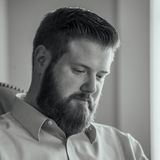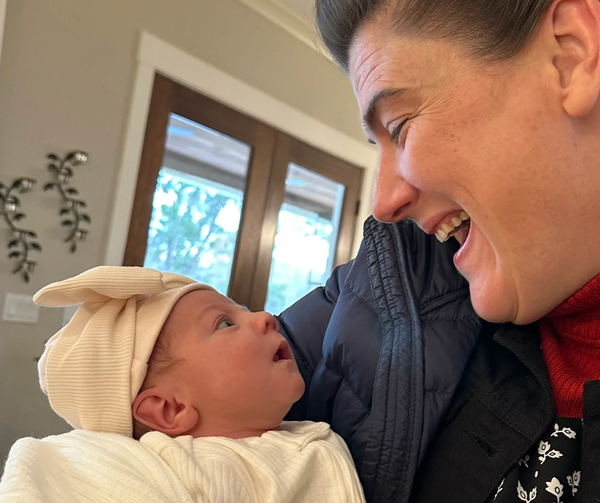Back to Eden: The Path to Life
When considering God’s truth or our connections within the body, we either approach these from a frame of individualism or recognize that He is forming a corporate design—the body of Christ. Similarly, when considering the truth of Scripture and God’s promises therein, it's important to view all the
Greetings!
I trust you all had a safe and enjoyable Fourth of July, despite the heat. It’s amazing how quickly the Texas sun and swelter can crisp the grass and dry up the moisture we gratefully received during the spring. Summer is definitely upon us, but on a positive note, we’ve only got a little over two months before we start to see some relief. It can’t come soon enough!
Recap of Sunday’s Message
I wanted to circle back and recap some of the main themes and points from this past Sunday’s message. I’m grateful for all of the feedback and encouragement I’ve received from so many of you. It’s gratifying to hear how many “milk barn” conversations have been sparked by our discussion about life and wholeness. If you haven't heard it already, click here to listen to it on the Heritage Press app!
Why the Topic Matters
When considering God’s truth or our connections within the body, we either approach these from a frame of individualism or recognize that He is forming a corporate design—the body of Christ. Similarly, when considering the truth of Scripture and God’s promises therein, it's important to view all the individual “truths” as interconnected parts of a greater whole rather than maintaining a fragmentary perspective. By doing so, we can see each topic as an interlocking element of a larger, living whole body of truth rather than as isolated silos.
The Goal of Life and Wholeness
If life is the goal, we start with the elements that comprise a living organism, allow wisdom to assemble those components according to a design of wholeness, and trust God to bring the organism to life through His Holy Spirit, resulting in animation, life, and fruitfulness!
On Sunday, we began our conversation with the song and prayer, “Come and fill this temple with the glory of the Lord,” and we considered how the glory of the Lord descended as a covering canopy over and within God’s sanctuary every time it was built exactly according to pattern. Building according to the wisdom of God’s precise pattern always brought about the glory of the Lord. And what else happened? Flesh could not enter (Exod. 40:34-35; 2 Chron. 7:1-3). This inability for flesh to enter the place of glory is strongly reminiscent of Adam and Eve’s inability to enter Eden after they violated God‘s order and faced expulsion.
Back to Eden
This took us back to Eden, the paragon of wholeness, harmony, life, and peace. We considered how the particular sin that gained traction in Eden was the sin of knowing for ourselves—choosing privately our own design and, specifically, “good and evil” (Gen. 3:5). We reflected on how this rupture of design removed God’s covering glory from human relationships, making mankind feel naked for the first time. This exposure describes the removal of God’s covering glory. In turn, humanity found increasing separation from this covering of the Father. “Sin” describes the rupture of design—choosing one’s own design in conflict with the Maker’s. Sin cannot be accurately assessed on its own but only in relation to how it damages the design of wholeness that fosters life. The result of sin is always the removal of covering glory, escalating until final separation (Rom. 6:23).
Fragmentation and Death
We cannot see from a divine perspective. We know only in part (1 Cor. 13:9), and private knowing—“knowing for ourselves”—is inherently fragmented. The word “analysis” itself means to dissolve or separate. When everything in creation is subjected to the false “wisdom” of human design, it begins to disintegrate, moving ever closer to chaos. This rearrangement of the design of the wholeness of life is the very description of death. Just as we cannot separate the petals from a flower without killing it, we cannot alter the body’s structure—such as moving our veins outside the skin or making our nerves external—without destroying the life that results from its design.
Humanity, through its rebellious autonomous knowledge, is the author of all the broken systems we see. Even minor brokenness in a toddler’s skin makes them cry. Brokenness in human relationships makes mothers weep, families grieve, and churches and cultures mourn the breakdown, the dissolution of wholeness, and the spread of chaos and death.
The Eden Problem
Every major pivotal “advance” in human history and civilization may be described as another significant attempt to solve the Eden problem—of distance and death—without returning to the Eden design in relation to and submission to the Designer. The invention of the city, the development of autocratic rule, social networking for constructing Babel, the science of warfare, the codification of law in Hammurabi’s Code, the establishment of the bureaucratic state, the specialization of human skills and labor, the development of democracy, the Republic, science, medicine, socialism, capitalism—all these represent one great effort and project after another to bring order from chaos, life from death, to solve the Eden problem without submitting to Eden’s Maker.
But the magnetic repulsion that drives us all apart has always been internal. The opposition to wholeness—the instrument of division leading to death—originates within the human heart (Jer. 17:9). No religion in history has ever claimed that human nature was the problem and that hope could only be realized through human transformation and regeneration—except one.
A Supernatural Birth
The entire drama of Abraham’s exodus and journey of faith pivots on one thing: a supernatural birth. Sarah is barren, Abraham is ancient, and a promise has been given of a new community of harmony, hope, and life. And the drama of faith boils down to whether Abraham will trust his own fallen, feeble human efforts or wait upon the Lord to act supernaturally. After many failed attempts of human works, God reveals that the entire dilemma will be solved through a supernatural visitation of the Almighty, resulting in a supernatural birth. “I will return, and Sarah shall have a son” (Gen. 18:10). So a visitation of God, resulting in a supernatural birth of promise—that is the starting point of the new community, the revolution back to Eden. Unlike every religion, this reveals that the problem is not humanity’s configuration but humanity’s nature, nativity, and inner disposition. This can be solved only through radical regeneration by the power, intervention, and union with God.
The Hope for Wholeness
The only hope for wholeness ensues from a common transformation—a supernatural visitation resulting in a new birth that first occurred at Pentecost, granting a new language, a new purpose, and resolving the inner antagonism driving us apart, making reunion with God and each other possible for the first time.
Jesus prays “that they may all be one” (John 17:21); Paul exhorts us to “be perfectly united in mind and thought” (1 Cor. 1:10); Paul emphasizes that “in Christ we, though many, form one body” (Rom. 12:5), and James reminds us to “let perseverance finish its work so that you may be mature and complete” (James 1:4). We are complete in Him, whole in Him, perfect in our unity, not our individuality.
The quest for wholeness—in both truth and the composition of people into the corporate design of the body of Christ—must be the primary ambition behind all searches, quests for truth, Christian efforts, studies of God’s Word, and considerations in the effort to find and live out salvation.
Conclusion
Perhaps this summary can help refocus and underscore some of the themes we discussed on Sunday. If we start to see life as the goal, we will see that wholeness is the prerequisite to life, wisdom is the assembly of the parts into the composition of wholeness, knowledge is the constituent parts, and the Holy Spirit is the animation of wisdom’s pattern. May God continue to frame the constituent needs and pursuits of our lives in terms of His overarching design—His eternal purpose from before time began—that He would demonstrate His wisdom to principalities and powers through the church, the one new man, the body of Christ (Eph. 3:10-11).
Prayer Requests
Please continue to uphold our brothers and sisters around the world in your prayers. Pray for the India fellowship that is now benefiting from Brother Nathan’s, Brother Zach’s, and Brother Jared’s ministry. Brother Jared, from New Zealand, has suffered a disturbing illness while serving in India. We are hopeful that the Lord has and is resolving that, but please cover him in prayer. Our brothers and sisters in India must leave their homes and are in a time of transition, seeking God’s will as to their next step—where they might live, how they might coalesce and make progress toward becoming a community.
I have been immensely blessed by my mother’s reports from Israel. She is overjoyed by the responsiveness of God’s people in that fellowship. They have experienced powerful words, teachings, and anointed breakthroughs in the Holy Spirit as the Lord strengthens, establishes, encourages, feeds, and blesses the church. Please continue to uphold Brother Nathaniel, Blair Joel, Sister Regina, and the entire team ministering there.
Pray for our Uganda fellowship. I spoke with Brother Emmanuel two days ago, and he explained that they feel the Lord prompting them to move and are still seeking confirmation and clarity as to His precise will and leading.
Final Greetings
Well, this is already getting long, so I’ll wrap it up here. We send you much love and warm greetings—each and every one of you. Feel free to write in with your questions, prayer requests, and comments. I’ll read every response.
With much love and encouragement,
Asahel Adams



